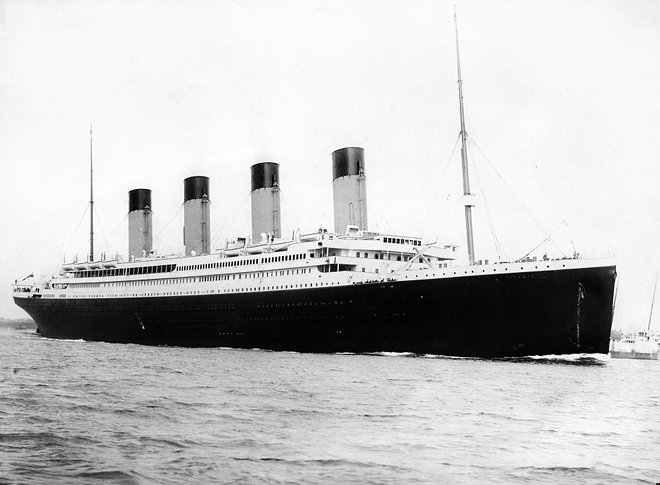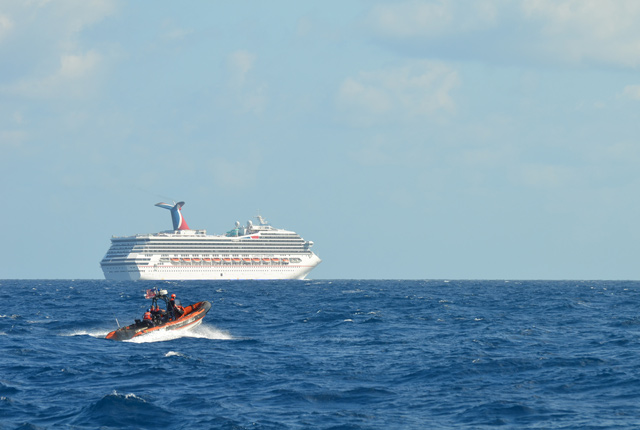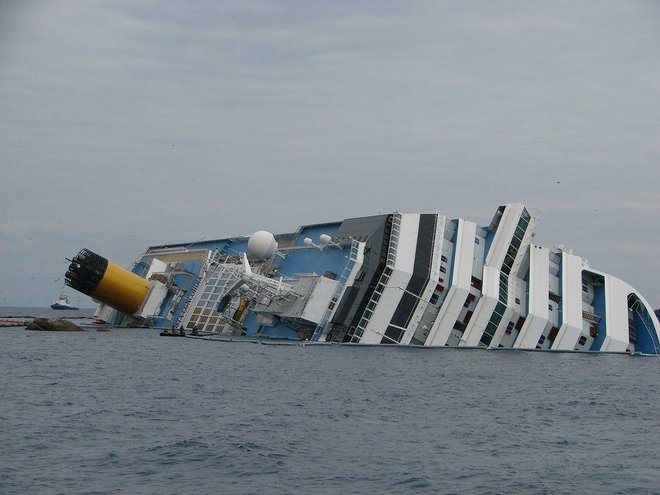The Titanic may be the most famous ship disaster, but surprisingly, it’s not even close to being the deadliest wreck that ever occurred on a luxury liner. If you’re trying to dissuade someone from taking a cruise, you should show them this list of maritime misadventures, which is presented in no particular order. Disclaimer: The vast majority of cruises sail without incident and are absolutely safe and not filled with poop. (Oh yeah, we’ll get there.) Get your plate ready for a buffet of high seas horror.
Notice: Undefined offset: 4 in /nas/content/live/stagingstmllc/wp-content/plugins/smartertravel-shared/includes/ads/includes/api.php on line 92
Notice: Undefined offset: 5 in /nas/content/live/stagingstmllc/wp-content/plugins/smartertravel-shared/includes/ads/includes/api.php on line 92
Notice: Undefined offset: 6 in /nas/content/live/stagingstmllc/wp-content/plugins/smartertravel-shared/includes/ads/includes/api.php on line 92
Notice: Undefined offset: 4 in /nas/content/live/stagingstmllc/wp-content/plugins/smartertravel-shared/includes/ads/includes/api.php on line 98
Notice: Undefined index: pass_through_args in /nas/content/live/stagingstmllc/wp-content/plugins/smartertravel-shared/includes/ads/includes/api.php on line 158
Notice: Undefined index: wrapper in /nas/content/live/stagingstmllc/wp-content/plugins/smartertravel-shared/includes/ads/includes/api.php on line 159
Notice: Undefined offset: 4 in /nas/content/live/stagingstmllc/wp-content/plugins/smartertravel-shared/includes/ads/includes/api.php on line 92
Notice: Undefined offset: 5 in /nas/content/live/stagingstmllc/wp-content/plugins/smartertravel-shared/includes/ads/includes/api.php on line 92
Notice: Undefined offset: 6 in /nas/content/live/stagingstmllc/wp-content/plugins/smartertravel-shared/includes/ads/includes/api.php on line 92
Notice: Undefined offset: 4 in /nas/content/live/stagingstmllc/wp-content/plugins/smartertravel-shared/includes/ads/includes/api.php on line 98
Notice: Undefined index: pass_through_args in /nas/content/live/stagingstmllc/wp-content/plugins/smartertravel-shared/includes/ads/includes/api.php on line 158
Notice: Undefined index: wrapper in /nas/content/live/stagingstmllc/wp-content/plugins/smartertravel-shared/includes/ads/includes/api.php on line 159
Notice: Undefined offset: 4 in /nas/content/live/stagingstmllc/wp-content/plugins/smartertravel-shared/includes/ads/includes/api.php on line 92
Notice: Undefined offset: 5 in /nas/content/live/stagingstmllc/wp-content/plugins/smartertravel-shared/includes/ads/includes/api.php on line 92
Notice: Undefined offset: 6 in /nas/content/live/stagingstmllc/wp-content/plugins/smartertravel-shared/includes/ads/includes/api.php on line 92
Notice: Undefined offset: 4 in /nas/content/live/stagingstmllc/wp-content/plugins/smartertravel-shared/includes/ads/includes/api.php on line 98
Notice: Undefined index: pass_through_args in /nas/content/live/stagingstmllc/wp-content/plugins/smartertravel-shared/includes/ads/includes/api.php on line 158
Notice: Undefined index: wrapper in /nas/content/live/stagingstmllc/wp-content/plugins/smartertravel-shared/includes/ads/includes/api.php on line 159
1. MV Wilhelm Gustloff
The deadliest maritime disaster in history wasn’t exactly an accident. The MV Wilhelm Gustloff was built as a cruise ship for Nazi Germany’s state-operated tourism organization, yet later served as a hospital ship for the German Navy and floating barracks. By January 30,1945, the Germans were losing World War II and Russia’s army was closing in. On that winter morning, 10,582 people were packed onto a boat designed to carry 1,900. The passengers included Nazi officers, wounded soldiers, and thousands of civilians, many of whom were children. A Russian submarine saw the Gustloff, which was moving slowly and wasn’t marked as a hospital boat, and shot three torpedoes at it. Many of the lifeboats were frozen to the deck and there wouldn’t have been enough to save the 10,000-plus people onboard. More than 9,000 of the passengers reportedly died in the icy waters, over six times as many passengers who perished in the Titanic sinking.
2. RMS Titanic

The many experts in 1912 who considered the Titanic “unsinkable” were to be proven wrong on the boat’s maiden voyage from Southampton to New York City. Thomas Andrews had designed the ship to withstand head-on collisions and rammings from other ships. However, the North Atlantic Ocean iceberg that took down the vessel scraped through five of its 16 watertight compartments. If it had only gone through four, the boat would have reportedly remained afloat. The Titanic’s lifeboats, similar to other systems at the time, were designed to shepherd passengers to nearby rescue ships, not take them to shore. Unfortunately, help was many hours away in the wee hours of April 15 when the boat was going under. The poor crew organization also caused many lifeboats to leave the ship at far less than full capacity. Plus, they only had enough boats for about a third of the people onboard. As a result, more than 1,500 people died — either on the ship or in the icy waters, waiting for help. A recent theory suggests a fire that started in the hull before the ship set sail weakened the vessel’s steel walls, making it susceptible to an iceberg that normally wouldn’t have caused as much damage. Still want to ride the Titanic? Australian billionaire Clive Palmer’s Blue Star Line company is building a modern replica of the ship, named Titanic II, which is set to sail in 2022.
3. Carnival Cruise Line’s Triumph

A generator fire on Carnival Cruise Lines’s Triumph (now called Carnival Sunrise) left the ship powerless, and a late-night comedy punchline was born: “The Poop Cruise.” Without working bathrooms, passengers were forced to drop their payloads into red “hazardous waste” bags and stuff them into garbage cans left in the hall. Passengers described carpets soaked with more than two inches of raw sewage. News reports described the scene as a “shanty town” and a “new circle of hell.” One passenger reportedly called her husband and told him that their 12-year-old daughter had Skittles for breakfast. It took four days for the Triumph to be towed from the Gulf of Mexico to Mobile, Alabama, where it was possible to smell the ship from the dock. Later, 31 passengers claimed long-lasting damage, including PTSD, and sued. After the verdict, 27 of them split $118,000, many earning less than $3,000 (minus legal fees) for their troubles.
4. Costa Concordia

One of the biggest passenger ships ever wrecked, the Costa Concordia had 17 decks, six restaurants, a three-story theater, and enough room for 4,200 vacationers. On January 13, 2012, captain Francesco Schettino agreed to a request by the ship’s chief maître d’, Antonello Tievoli, and sailed closer to the island of Isola del Giglio than normal. Why? Tievoli, a native of Giglio, wanted to impress and “salute” local residents. Unfortunately, captain Schettino turned off the ship’s alarm for the computer navigation system and later admitted he thought he knew the waters well enough to navigate by sight. However, the ship’s first mate testified that the captain had left his glasses in his cabin and requested them. The Costa Concordia struck an underwater rock, capsized, and sank, killing 32 passengers. Schettino’s worst maritime sin? He abandoned the ship with 300 passengers still onboard. A Coast Guard officer in contact with the ship at the time of the sinking claimed he told Schettino to get back onboard. After being convicted of manslaughter and pursuing several appeals, Schettino only started his 16-year prison sentence in May of 2017. The salvage effort (the ship was completely dismantled) was the largest effort of its kind.
5. SS Eastland
Launched in 1903, the SS Eastland was a passenger ship based in Chicago and used for tours. Although the ship had noted listing (tilting) since its inception and some measures had been taken to rectify this, the SS Eastland was still suffering from being top heavy when boarding for a cruise in 1915. The ship was meant to sail from Chicago to Michigan City, Indiana, carrying workers from Western Electric Company’s Hawthorne Works for a picnic. On July 24, 2,572 passengers boarded, with many congregating on the open upper decks. While still docked, the ship began to list to the port side, and reportedly, at some point more passengers rushed to the port side, causing the ship to completely roll onto its side. Despite the river’s bottom being just 20 feet below, and the shore being about the same distance, a total of 844 passengers and crew members died, including 22 entire families.
6. Royal Pacific
When the Royal Pacific was first launched as a passenger ferry in 1964, it could carry 250 passengers, 91 cars, and 16 trucks. Sold and converted into a cruise ship in the late 1980s, the boat’s maiden voyage was a two-night “cruise to nowhere” that left from Singapore and sailed by Phuket, Malacca, and Penang before returning home. At around 2 a.m., when most of the passengers were asleep, the crew heard a loud bang and the plates on the buffet table crashed to the ground. A Taiwanese trawler, Terfu 51, had accidentally rammed the ship, leaving a six-foot gash in the side. As the trawler pulled away, there was a deafening sound of metal scraping against metal. The PA system wasn’t working properly on the boat, but the safety officer ran downstairs to survey the damage. When he returned, he told everyone to put on their life jackets. Reports vary about how many passengers were impacted — most tallies number 30 dead and 70 injured. Several passengers also complained that a mix of Greek-, English- and Mandarin-speaking crew members led to few people understanding what anyone was saying.
7. SS Morro Castle
The story of the SS Morro Castle is so dreadful, it’s surprising no Hollywood producer has turned the tale into a horror movie. Director Fritz Lang actually collaborated on a script about the tragedy, and named it “Hell Afloat” (which is a pretty apt description), but it was never made. In between 1930 and 1934, the SS Morro Castle regularly shuttled 480-plus passengers between Havana and New York. While onboard, there was no Depression to worry about and no Prohibition, which meant plenty of booze-filled partying. However, the September 1934 return sail from Cuba to the Big Apple seemed to be cursed. On September 7, captain Robert Wilmott complained of stomach trouble after eating dinner and retired to his cabin, where he later died of an apparent heart attack. Chief officer William Warms took command and a few of hours later, around 3 a.m. on September 8, a fire started in one of the storage lockers. The crew’s attempts to fight the fire were haphazard and inadequate, and soon the blaze couldn’t be contained. Many crew members abandoned the ship, leaving confused passengers to fend for themselves in the dark, smoky hallways. Some jumped from the deck to their death in the water. Rescuers lined up on the Jersey Shore to meet the lifeboats carrying passengers. The next morning, the burning, black hull of the SS Morro Castle ran aground at Asbury Park, New Jersey. Of the 549 people aboard the cruise, 86 guests and 49 crew members died.
8. Royal Caribbean’s Explorer of the Seas
A cruise can be an oasis of calm in rough waters, but it’s also a petri dish of disease where viruses ricochet from passenger to passenger. In 2014, the Royal Caribbean’s Explorer of the Seas cruise from New Jersey to the Caribbean earned the dubious honor of being the ship with more sick passengers than any other boat trip since the Centers for Disease Control and Prevention started keeping statistics more than 20 years ago. In total, an estimated 700 passengers and crew members were sick at some point. Most cruise ship illnesses are the result of norovirus that causes inflammation of the stomach and large intestines as well as regular trips to the “head.” If you’re wondering how to stay healthy on a cruise with sick passengers, plenty of handwashing (and avoiding ill people) is key. Bugs pass quickly through contact with ship railings, bathroom doors, and buffet food.
9. MTS Oceanos
Built by a French company and first launched in 1952, the MTS Oceanos was purchased by a Greek company in 1976. On August 3, 1991, Oceanos set sail for East London, South Africa and headed north for Durban, led by Captain Yiannis Avranas. The ship reportedly headed into 40-knot winds and 30-foot swells, and thus the typical sail-away outdoor deck party with British entertainers Moss and Tracy Hills was moved to an indoor lounge. The sea conditions worsened that night, leading to the ship rolling from side to side, and eventually an explosion was heard due to a lack of repairs for the waste disposal system. This all led to the ship losing power and water filling its generator room, so the generators were shutdown and the ship was led adrift. A distress call was sent and answered by numerous South African helicopters and a Dutch container ship. Shockingly, the captain and many crew members were among the first to be airlifted to shore, leaving the entertainment staff to coordinate the rescue efforts and help passengers to safety. All 571 passengers and the crew members were saved by the time the ship sank nose-first into the sea.
NOW WATCH: 7 Things You Should Never Do on a Cruise
You’ll Also Like:
- This Cruise Ship Went Dark for 10 Days to Avoid a Pirate Attack
- The Worst Hotel Wedding Disasters That You Won’t Believe Happened
- The Most Horrifying Honeymoon Disasters EVER
All products are independently selected by our writers and editors. If you buy something through our links, Oyster may earn an affiliate commission.